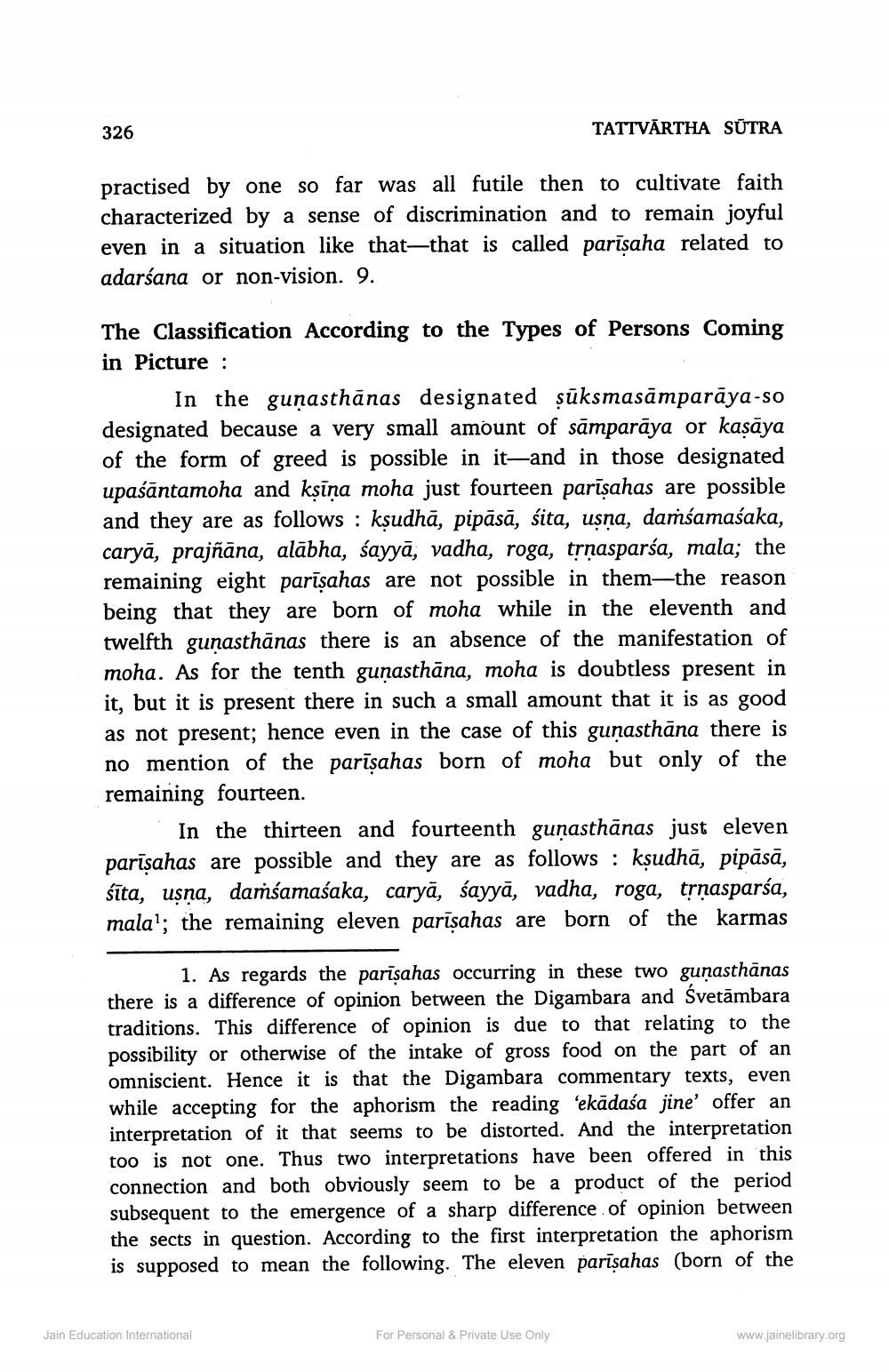________________
326
TATTVĀRTHA SŪTRA
practised by one so far was all futile then to cultivate faith characterized by a sense of discrimination and to remain joyful even in a situation like that—that is called parīsaha related to adarśana or non-vision. 9.
The Classification According to the Types of Persons Coming in Picture :
In the guṇasthānas designated sūksmasāmparāya-so designated because a very small amount of sāmparāya or kasāya of the form of greed is possible in it-and in those designated upaśāntamoha and ksīņa moha just fourteen parīşahas are possible and they are as follows : kşudhā, pipāsā, śita, usna, daṁsamasaka, caryā, prajñāna, alābha, sayyā, vadha, roga, tặnasparśa, mala; the remaining eight parīşahas are not possible in them—the reason being that they are born of moha while in the eleventh and twelfth gunasthānas there is an absence of the manifestation of moha. As for the tenth gunasthāna, moha is doubtless present in it, but it is present there in such a small amount that it is as good as not present; hence even in the case of this gunasthāna there is no mention of the parīşahas born of moha but only of the remaining fourteen.
In the thirteen and fourteenth gunasthānas just eleven parīşahas are possible and they are as follows : kșudhā, pipāsā, śīta, uşna, daṁśamasaka, caryā, sayyā, vadha, roga, tặnasparsa, mala'; the remaining eleven parīşahas are born of the karmas
1. As regards the parīşahas occurring in these two gumasthānas there is a difference of opinion between the Digambara and Śvetāmbara traditions. This difference of opinion is due to that relating to the possibility or otherwise of the intake of gross food on the part of an omniscient. Hence it is that the Digambara commentary texts, even while accepting for the aphorism the reading 'ekādaśa jine' offer an interpretation of it that seems to be distorted. And the interpretation too is not one. Thus two interpretations have been offered in this connection and both obviously seem to be a product of the period subsequent to the emergence of a sharp difference of opinion between the sects in question. According to the first interpretation the aphorism is supposed to mean the following. The eleven parīsahas (born of the
Jain Education International
For Personal & Private Use Only
www.jainelibrary.org




